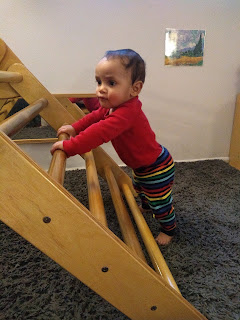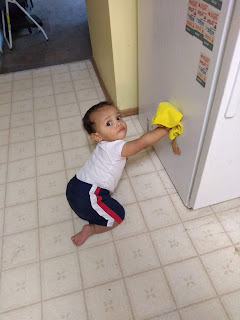Gross Motor Opportunities for Infants and Toddlers

Babies and toddlers need to move! It is exhausting keeping up with Calvin right now at 17 months. He might stop for a few moments to listen to a book or use some work from his shelf, but the majority of the time he is on the move. Dr. Montessori recognized the need for gross motor opportunities not only for their importance in developing the large muscles of the body, but also in their role in healthy brain development. Children (and adults for that matter) do not learn optimally when they are sitting and listening, reading, or writing all day. To engage the whole mind, the whole body must be engaged! The need for gross motor activities is especially important in the toddler age when children are hitting gross motor milestones and first developing skills such as walking, running, climbing, and jumping. We don't necessarily need to provide specific materials to support a child's gross motor development. A child looking to pull up on somet...



